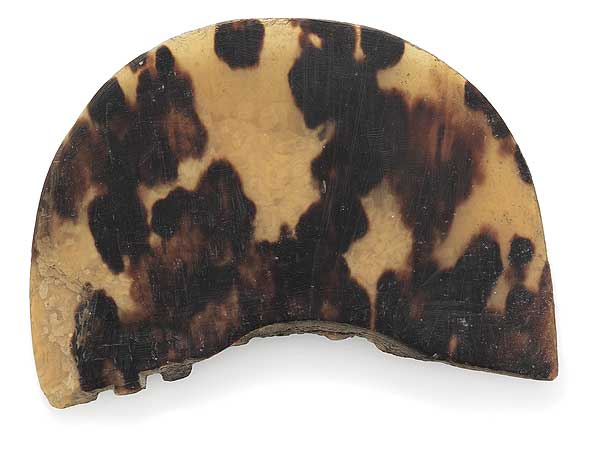Scootle has stopped supporting resources that use the Adobe Flash plug-in from 18 Dec 2020. Learning paths that include these resources will have alerts to notify teachers and students that one or more of the resources will be unavailable. Click here for more info.
 Betty Guard's comb, c1830
Betty Guard's comb, c1830
TLF ID R3718
This is a broken tortoiseshell hair comb with an extraordinary history. It was made around 1830 and belonged to Betty Guard (1814-70), an early European settler in New Zealand. It has a half-round shape and the remains of broken teeth. It measures 11.0 cm by 8.5 cm.
